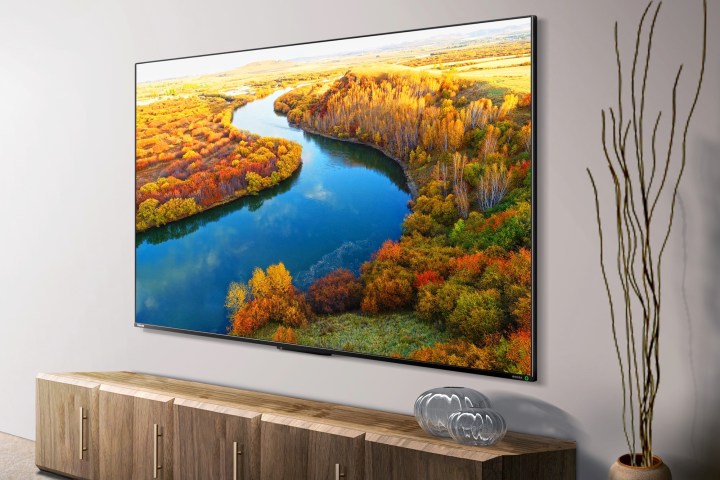Toshiba has announced the first smart TV based on Amazon’s Fire TV software that has a native 120Hz LCD panel. The M550KU-Series LED 4K UHD Smart TV with Fire TV starts at $800 for the 55-inch model. Other sizes include the $1,000 65-inch and $1,200 75-inch models. All three sizes will be available in December on Amazon.com, as well as Best Buy (online and in stores), starting with the 55-inch model on December 6.
The M-Series is the latest model to bring a set of upscale specifications to Fire TV-enabled smart TVs. It joins the recently announced Fire TV Omni, which was designed by Amazon itself, as well as the Insignia F50, a Fire TV with a quantum dot display.

Like the Fire TV Omni, the M-Series is equipped with far-field voice microphones so you can issue hands-free voice commands from across the room, without having to reach for a remote. It also supports both Dolby Vision and HDR10 for a more vivid and colorful picture when viewing HDR content from Amazon Prime Video and other streaming services. But perhaps the most notable M-Series feature is its native 120Hz LCD panel.
Most other Fire TV models use 60Hz panels. And while that’s more than adequate for movies and TV shows, it’s not as good as 120Hz when it comes to gaming. That makes the M-Series the first smart TV with the Fire TV software to offer this gamer-friendly feature. Unfortunately, the M-Series falls short of being a gamer’s best friend. While it offers auto low-latency mode (ALLM) which helps greatly with input lag, it doesn’t support any flavor of variable refresh rate (VRR) technology, which is becoming increasingly desirable for both console and PC gamers alike.
Moreover, it’s not yet clear how gamers will be able to take advantage of the M-Series’ 120Hz capabilities — the TV has four HDMI 2.1 ports, but these only support 4K @ 60Hz. With that limitation, only gaming apps that can be added to the TV via the Fire TV app store will be able to avail themselves of the TV’s 120Hz panel.

The LED backlight offers up to 48 local dimming zones, which should give the TV decent contrast and black levels, and Toshiba’s Regza Engine
On the audio side of things, the M-Series supports Dolby Atmos, which is key for folks who are looking to get the best possible surround sound from content that uses Dolby’s 3D format. But there’s also support for DTS Virtual:X, which can make all kinds of two-channel stereo content sound a lot more like surround sound — though this will all depend on how good the M-Series internal speakers are.

Toshiba has given the M-Series 16GB of flash memory, which should help with speedy performance in terms of the Fire TV user interface, and an included picture-in-picture feature will let you watch Alexa-compatible security camera feeds while you’re bingeing the latest shows.
In terms of design, the M-Series looks a lot like Toshiba’s C-Series Fire TVs, which it released earlier in 2021. The nearly invisible bezels give it an all-picture look that minimizes the appearance of the TV itself. We haven’t had an opportunity to test the C-Series, but rtings.com didn’t exactly issue a glowing report, saying, “The Toshiba C350 is oOK overall.” Hopefully the M-Series delivers a better experience.
Editors' Recommendations
- You can now make your own AI art with Amazon Fire TV
- LG’s new M-Series Wireless OLED TVs start at $5,000
- Vizio has new smart TVs and soundbars for 2023, but the best may be yet to come
- Amazon Fire TV Stick 4K Max packs even more power at just $55
- New Fire TV experience, AirPlay 2 hits more devices this week




